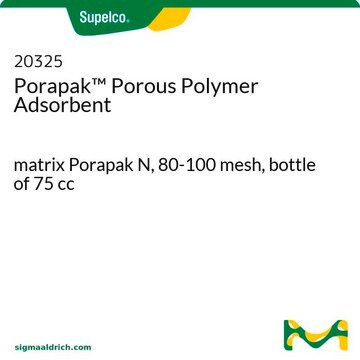SHH0022
Histoheme
Se connecterpour consulter vos tarifs contractuels et ceux de votre entreprise/organisme
About This Item
Code UNSPSC :
12171500
Produits recommandés
Application(s)
hematology
histology
Température de stockage
room temp
Description générale
Developed to assist histologists with bloody specimens such as placental fragments, bone marrow biopsies, liver, spleen and endometrial curettings which tend to harden after processing and dry out. When set on ice, these tissues are prone to shatter and flake, leaving blood fragments on the work area, microtome, and water bath, and have a high potential to create extraneous tissue “floaters” on slides.
Histoheme is an ammonia based emollient that alleviates these problems and mess. Trimming into these blocks and soaking tissue in Histoheme allows technicians to cut clean, non-fragmented sections without stopping in-between each block to allow for better morphological staining.
Histoheme is an ammonia based emollient that alleviates these problems and mess. Trimming into these blocks and soaking tissue in Histoheme allows technicians to cut clean, non-fragmented sections without stopping in-between each block to allow for better morphological staining.
Méthode d'analyse
Procedure
1. Trim blocks 10-20 microns.
2. Soak in small amounts of Histoheme. After use, dispose of used Histoheme to prevent cross-contamination with other samples.
3. Place block in microtome chuck and recut for 4-5 μm sections.
Histoheme does not have any effect on H&E staining or immunohistochemistry stains. The product is completely removed during the deparaffinization process.
1. Trim blocks 10-20 microns.
2. Soak in small amounts of Histoheme. After use, dispose of used Histoheme to prevent cross-contamination with other samples.
3. Place block in microtome chuck and recut for 4-5 μm sections.
Histoheme does not have any effect on H&E staining or immunohistochemistry stains. The product is completely removed during the deparaffinization process.
Mention d'avertissement
Danger
Mentions de danger
Conseils de prudence
Classification des risques
Aquatic Acute 1 - Aquatic Chronic 3 - Eye Dam. 1 - Skin Corr. 1B - STOT SE 3
Organes cibles
Respiratory system
Code de la classe de stockage
8B - Non-combustible corrosive hazardous materials
Classe de danger pour l'eau (WGK)
WGK 2
Certificats d'analyse (COA)
Recherchez un Certificats d'analyse (COA) en saisissant le numéro de lot du produit. Les numéros de lot figurent sur l'étiquette du produit après les mots "Lot" ou "Batch".
Déjà en possession de ce produit ?
Retrouvez la documentation relative aux produits que vous avez récemment achetés dans la Bibliothèque de documents.
Notre équipe de scientifiques dispose d'une expérience dans tous les secteurs de la recherche, notamment en sciences de la vie, science des matériaux, synthèse chimique, chromatographie, analyse et dans de nombreux autres domaines..
Contacter notre Service technique










